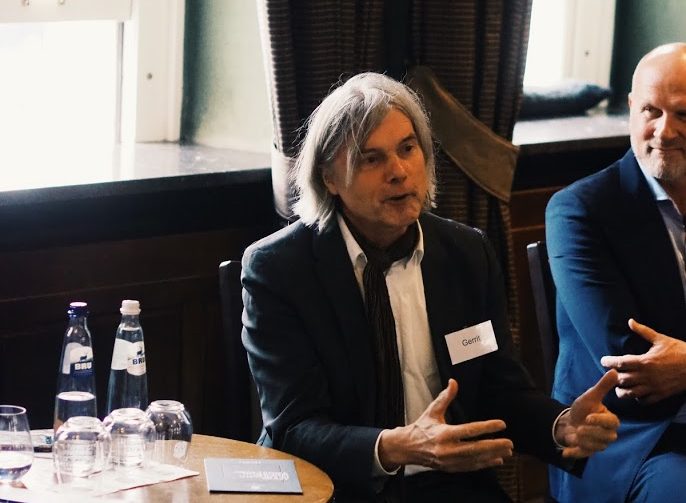Dr. Gerrit Vermeer and Dr. Freek Schmidt on the Preservation and Re-Use of Vacant Churches
Saturday October 26th we organized our Autumn meeting in Amsterdam! Centered on the CSS theme of Beauty, our main guests were architectural historians Dr. Gerrit Vermeer and Dr. Freek Schmidt. Together with Dr. Herman Wesselink—who led the conversation—and other participants they discussed the preservation and re-use of vacant churches.
Scroll down for a report of what has been discussed!
What did we discuss?
Church buildings have always been a part of social struggle. Before the 19th century, complete religious freedom did not yet exist in the Netherlands, as public administration was strongly Calvinist-oriented. This did not encourage the construction of non-Calvinist churches. After 1800 there was more freedom to build, which is one of the reasons almost all of our church buildings date from the 19th or early 20th century. But even in the 19th century the mostly liberal city councils still resisted the construction of large, centrally positioned churches. Nonetheless, during this period the national government did provide support for the construction of churches: in 1824 King William I introduced a law to subsidize church building. This is difficult to imagine in our current secular age, in which the only form of state aid consists of the Restoration Fund, which provides low-interest loans—but only for “churches withdrawn from worship.” Civil emancipation and the associated rise of Christian politics also contributed strongly to the construction and maintenance of churches.
During the post-war period the focus was on building much and cheaply. Many churches were demolished and replaced. Sometimes there was protest against this, for example in Rotterdam, where students climbed the tower of the Dutch Reformed Church scheduled for demolition. This did not help, however: a nursing home took the place of the church. Such protest did not stand alone—from the 1970s onwards 19th-century churches found new appreciation. Moreover, from the 1980s all municipalities in the Netherlands could designate buildings as monuments, which also included many churches. On the other hand, the process of secularization has continued unabated, or even accelerated. The preservation of churches hence requires effort and ever more inventive solutions for restoration and re-use.
What may we conclude?
Where do we go with our abandoned churches? Should we keep them? If so, which of them? Many arguments play a role here. At the national level, particular attention is paid to the cultural and architectural-historical importance of certain buildings. At the local level there is more attention for the social function and the place of a church in the cityscape. Between them a tension exists. A good balance between the national and the local interest is hence important. In 2021 the management of monuments will be almost entirely in the hands of municipalities and local communities. It is highly questionable whether they are sufficiently prepared for this.
Re-use also remains a complex issue. The Roman Catholic Church prohibits the ‘undignified’ use of church buildings. What exactly should count as undignified, however? Some churches change their denomination (sometimes they even become Orthodox), but use as a non-Christian house of prayer is out of the question. Most profane uses are allowed, however—some churches have even been transformed into bars or clubs. Regional differences are also important: in Amsterdam there will almost always be a destination for an abandoned building; in smaller municipalities (which are often subject to demographic decline) this is much more difficult.





